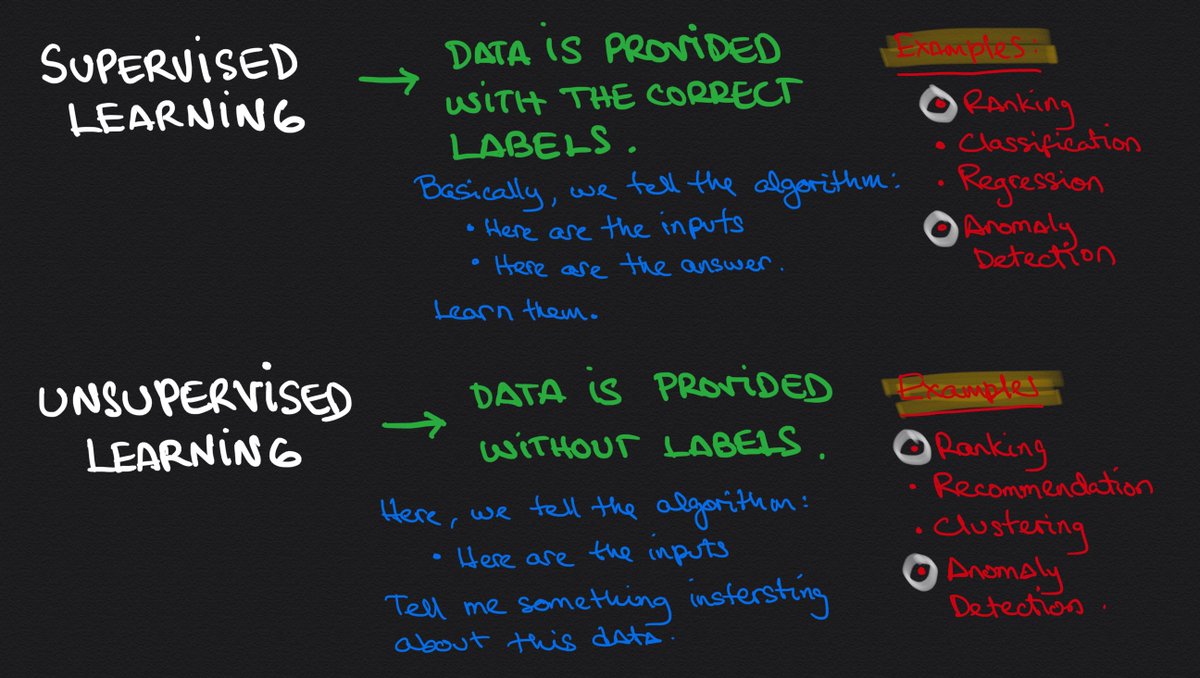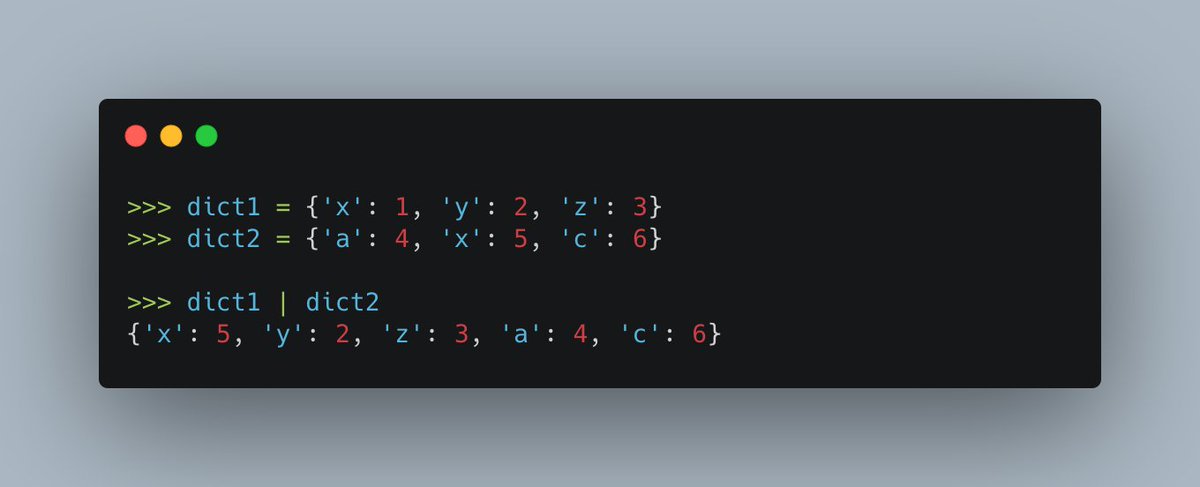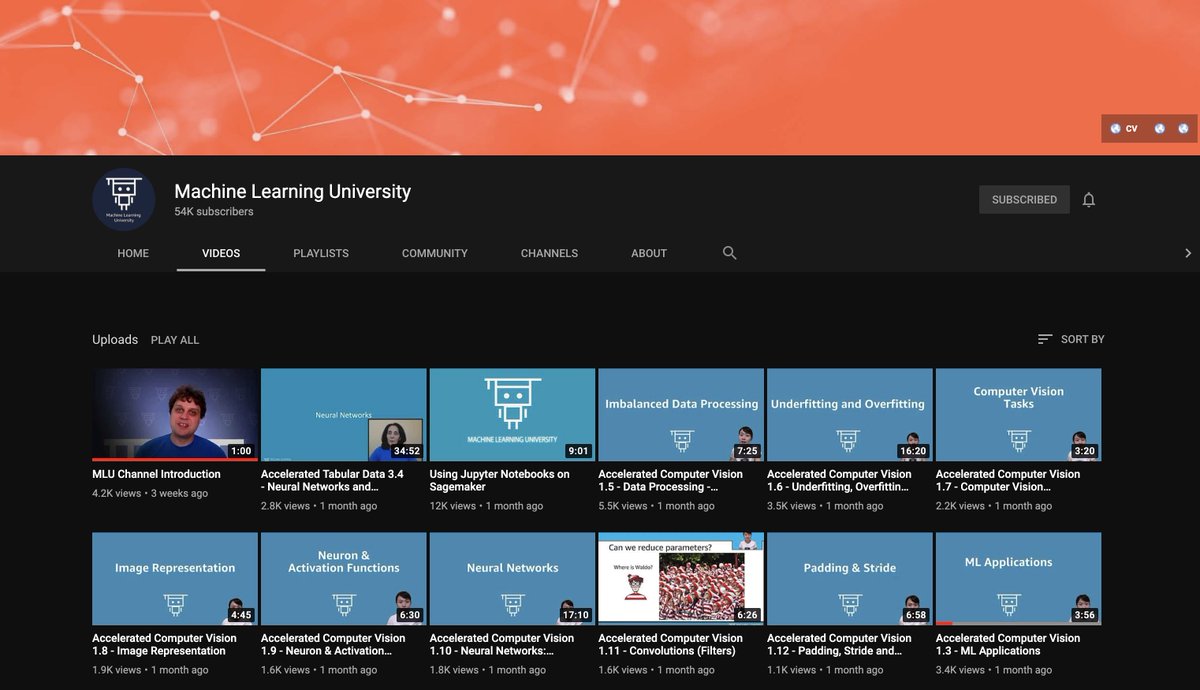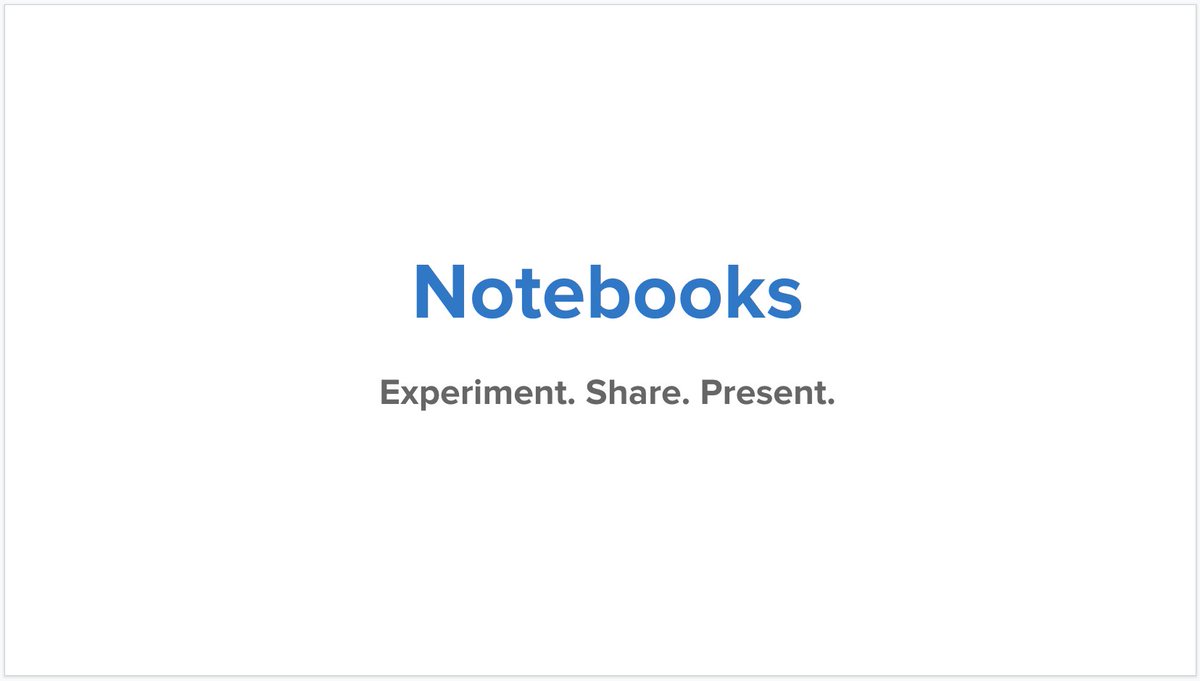
Some applications of Machine Learning:
▫️Ranking
▫️Recommendation
▫️Classification
▫️Regression
▫️Clustering
▫️Anomaly Detection
Here is a 3-second description of each one them: 🧵👇
▫️Ranking
▫️Recommendation
▫️Classification
▫️Regression
▫️Clustering
▫️Anomaly Detection
Here is a 3-second description of each one them: 🧵👇
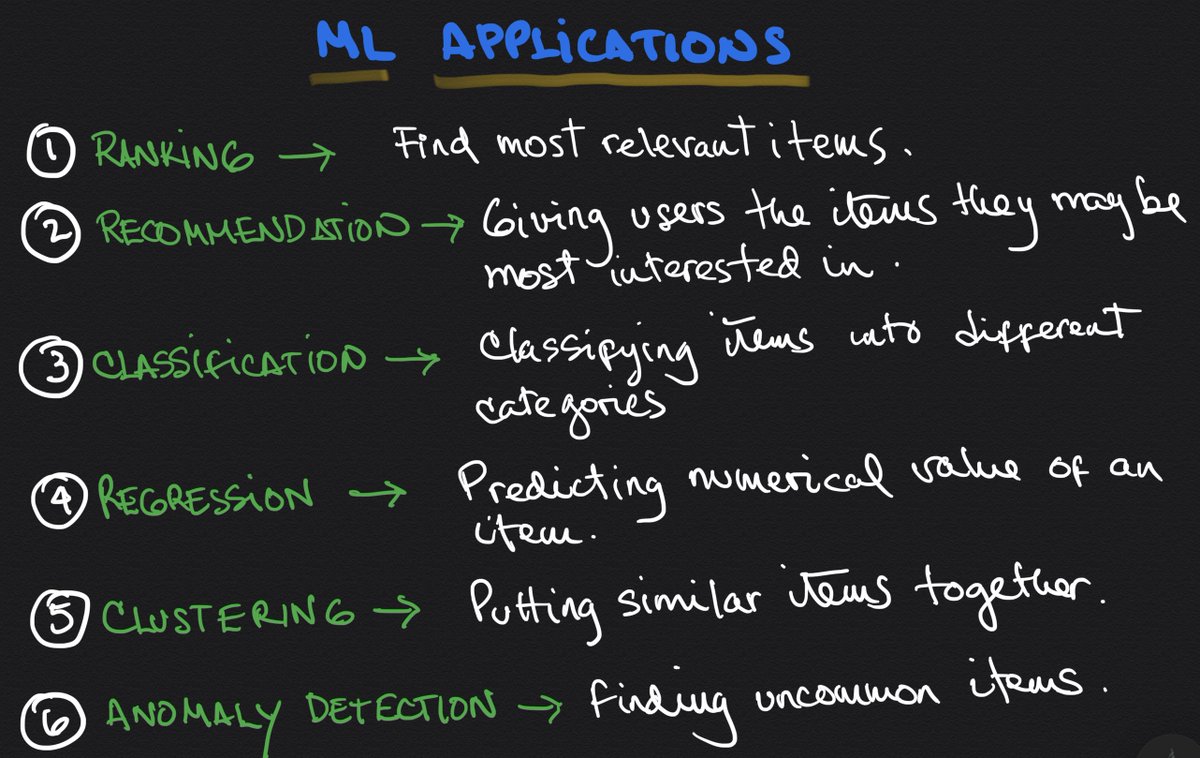
1⃣ Ranking
🔹 Help your users find the most relevant items they are looking for.
For example, Google's algorithm to rank search results when a user searches for something combines multiple signals to offer the best results: your location, interests, past searches, etc.
👇
🔹 Help your users find the most relevant items they are looking for.
For example, Google's algorithm to rank search results when a user searches for something combines multiple signals to offer the best results: your location, interests, past searches, etc.
👇
2⃣ Recommendation
🔹 Give your users the items they may be most interested in.
For example, Netflix's recommendation system to suggest what to watch based on your preferences, genre watch time, ratings, location, etc.
👇
🔹 Give your users the items they may be most interested in.
For example, Netflix's recommendation system to suggest what to watch based on your preferences, genre watch time, ratings, location, etc.
👇
3⃣ Classification
🔹 Determine which category does an item belongs to.
For example, Facebook's universal product recognition model automatically identifies consumer goods and classifies them depending on their visual characteristics (furniture, fashion, swimwear, etc.)
👇
🔹 Determine which category does an item belongs to.
For example, Facebook's universal product recognition model automatically identifies consumer goods and classifies them depending on their visual characteristics (furniture, fashion, swimwear, etc.)
👇
4⃣ Regression
🔹 Predict a numerical value associated with an item.
For example, Zillow's algorithm determines the price of a house giving its characteristics, location, surrounding houses, etc.
👇
🔹 Predict a numerical value associated with an item.
For example, Zillow's algorithm determines the price of a house giving its characteristics, location, surrounding houses, etc.
👇
5⃣ Clustering
🔹Put similar items together.
For example, finding similar users and topics on Twitter based on the content of their tweets and hashtags they use.
👇
🔹Put similar items together.
For example, finding similar users and topics on Twitter based on the content of their tweets and hashtags they use.
👇
6⃣ Anomaly Detection
🔹Find uncommon items.
For example, Amazon Fresh's algorithm to automatically determine produce that's no longer fresh and shouldn't be sold to customers.
👇
🔹Find uncommon items.
For example, Amazon Fresh's algorithm to automatically determine produce that's no longer fresh and shouldn't be sold to customers.
👇
All of these applications are discussed on Day 3 of #MLU, a 4-minute video that focuses on some examples of how Amazon uses these applications.
Video:
Do you have any other examples to add?
Video:
Do you have any other examples to add?
• • •
Missing some Tweet in this thread? You can try to
force a refresh

